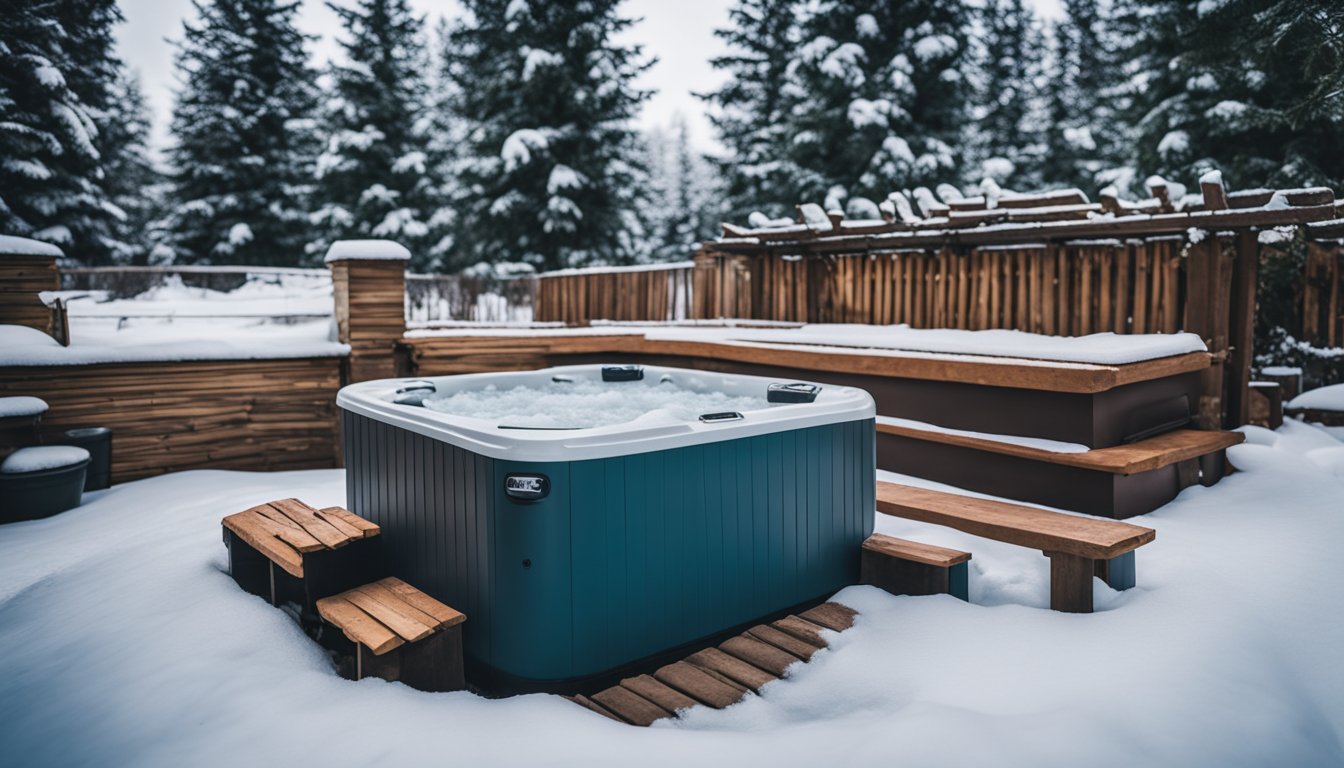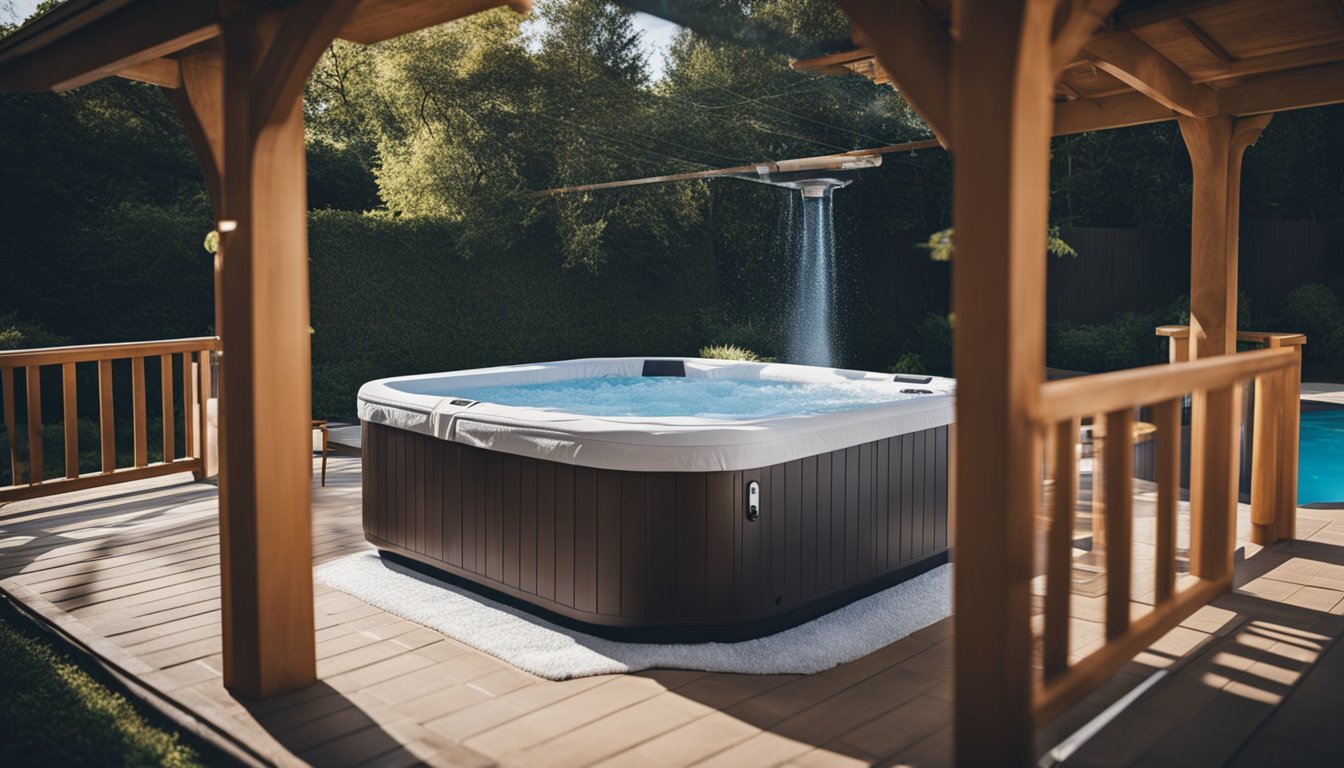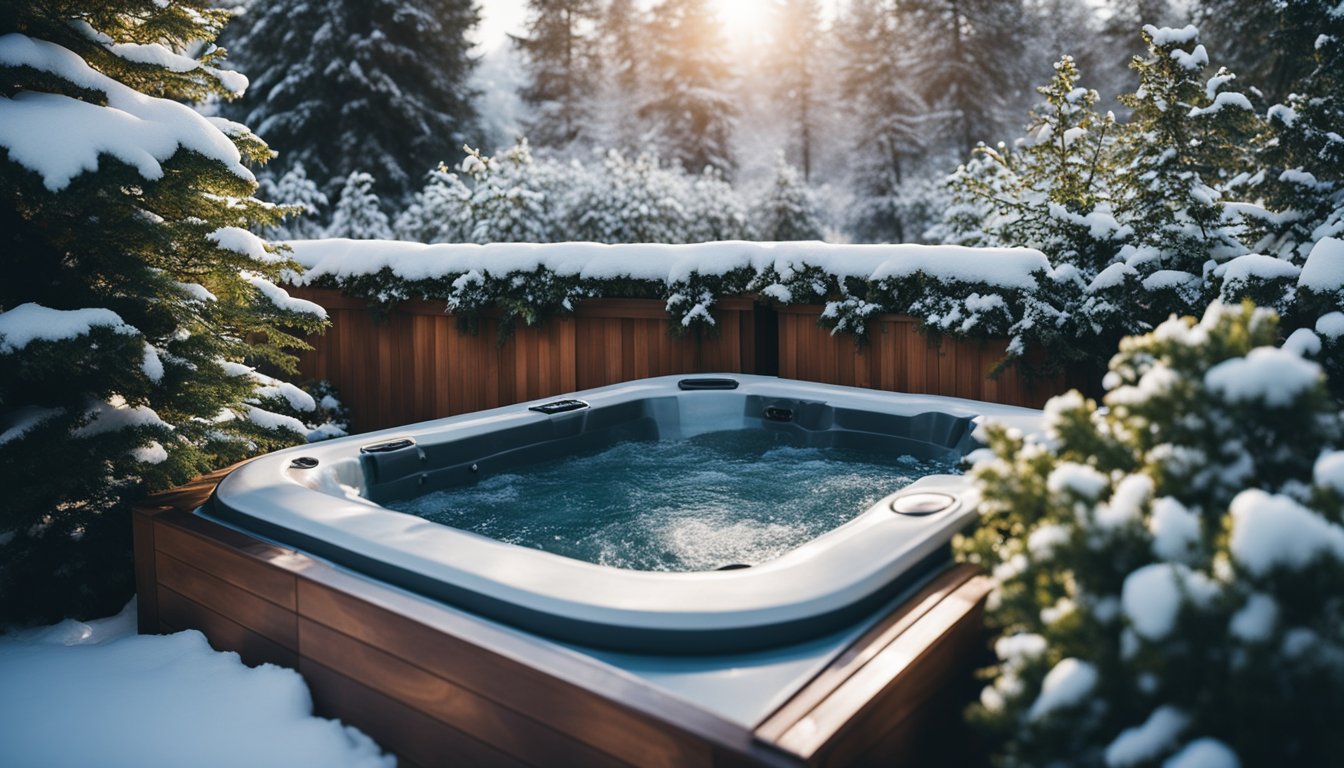Late updated: 16 Aug 2024 13:08
Written by: James Whitaker
Winter-Proofing Your Garden Hot Tub: Essential Tips for Cold Weather Protection
Winter is approaching, and ensuring your garden hot tub is ready for the cold months ahead can bring both joy and peace of mind. Proper winter-proofing will protect your investment and ensure you can enjoy hydrotherapy sessions even during the chilliest days. Our comprehensive guide aims to help you prepare your hot tub for winter efficiently and effectively.

From draining and cleaning to securing a high-quality cover, our step-by-step process will leave your hot tub in pristine condition, ready to withstand freezing temperatures. Simple maintenance tasks like keeping the filters clean and maintaining the correct chemical balance are crucial for prolonging the life of your hot tub.
Don't let the winter blues affect your relaxing soak sessions. Following our expert advice will ensure that your hot tub remains a soothing retreat even on the coldest winter nights.
Key Takeaways
- Proper winter-proofing protects your hot tub and prolongs its lifespan
- Maintenance tasks like keeping filters clean and balancing chemicals are essential
- Secure a high-quality cover to protect against freezing temperatures
Preparing Your Hot Tub for Winter

To ensure our hot tub remains in excellent condition throughout the cold months, we need to undertake several essential steps. These steps involve draining and cleaning the hot tub, inspecting and protecting its components, and securing it against freezing conditions.
Draining and Cleaning
Before the winter freeze, we must drain our hot tub completely. Using a garden hose and a submersible pump makes the draining process more efficient. Once drained, it's crucial to perform a deep clean. This involves scrubbing the shell to remove any stains or build-up. We recommend using a wet & dry vacuum to extract the remaining water from the jets and plumbing, ensuring no water is left to freeze and cause damage.
It's also important to check and clean the filters. These should be removed, cleaned, and stored in a dry place. If needed, replace any worn-out filters to ensure the hot tub is ready for use when winter ends. Maintaining the chemical balance throughout the year is key to preserving water quality and the longevity of the hot tub's components.
Inspecting and Protecting Components
After cleaning, it’s vital to inspect the hot tub's components. Start with the pump, blower, and heating elements to ensure they are in good working order. Look for any signs of wear or damage that could worsen in freezing temperatures. Addressing potential issues now can save us from costly repairs later.
Loosen the unions on the pumps and blowers to let any remaining water drain out completely. This step is essential to prevent cracking in the plumbing from frozen water. Ensure the chemical balance is checked before closing up, as leftover chemicals can cause deterioration of parts.
Additionally, make sure the cover is in good condition. A sturdy hot tub cover with secure straps will protect the shell from debris and reduce heat loss. Consider investing in a thermal blanket for extra insulation.
Securing Against Freezing Conditions
Preventing our hot tub from freezing is crucial. Frozen pipes can cause significant damage, leading to costly repairs. To avoid this, ensure the hot tub is completely drained. Use a wet & dry vacuum on all jets and the main drain to remove any lingering water.
Cover the hot tub with a thermal blanket under the main cover. This will help in retaining heat and insulating the water against severe cold. For additional protection, use a tarpaulin or cover bag over the hot tub cover to shield it from snow and ice.
Check the water level periodically if we are still using the tub intermittently. Keeping an eye on the temperature and ensuring that the heating system is operational will minimise the risk of freezing. If closing down the hot tub is not an option, maintain usual heating to prevent frozen pipes and keep the tub's internals functioning.
Operating Your Hot Tub During Winter
To keep your hot tub running efficiently during winter, it’s crucial to focus on heat retention, water quality, and practical considerations for cold weather operation. Follow these guidelines to ensure your hot tub remains a source of joy and relaxation even in the chilliest conditions.
Optimising Heat Retention
Maintaining a consistent temperature is essential. Use a high-quality hot tub cover to minimise heat loss. A thermal blanket can add an extra layer of insulation, helping to reduce running costs.
Ensure the cover fits snugly to keep warm air trapped inside. Regularly check for any damage to the cover and repair it promptly.
Insulating the pipes is another effective approach. This helps keep the water warm as it circulates through the system, supporting the overall efficiency.
Maintaining Water Quality and Components
Winter can be harsh on equipment and water quality. It is crucial to monitor water levels and chemical balance regularly. Use appropriate chemicals to prevent bacteria growth, ensuring the water remains safe.
In addition, check the hot tub's components, such as pumps and filters. Make sure everything is functioning correctly to avoid unexpected breakdowns.
For air blower systems, activate them periodically to prevent water from freezing inside the lines. This will keep your hydrotherapy sessions enjoyable and effective.
Practical Considerations
When using the hot tub in snowy conditions, ensure safe footwear to avoid slipping. Clear snow from around the hot tub regularly to ensure easy access and reduce the risk of falls.
Be mindful of energy consumption. Using a thermal blanket and properly maintaining the cover can significantly lower the energy bill. Keeping the hot tub covered between uses is a simple yet effective strategy for conserving heat.
Finally, remember that while warm water soothes muscles and joints, it’s important to stay hydrated and avoid long sessions that can lead to overheating. Enjoying your hot tub safely means making sure it remains a source of comfort and relaxation, no matter how cold it gets outside.
Frequently Asked Questions

When winter arrives, maintaining an outdoor hot tub presents unique challenges. Below, we address common concerns, from insulation techniques to the best attire for winter hot tubbing.
How can I insulate my outdoor hot tub effectively for the winter months?
Adding a high-quality thermal cover is essential. Consider using foam board insulation around the sides and bottom of the tub. Additionally, make sure to close all cabinet access panels to retain heat.
What are the advantages and disadvantages of winterising my garden hot tub?
Winterising can prevent damage from freezing temperatures, extending the lifespan of your hot tub. However, the process is time-consuming and requires careful attention to detail to ensure all water is drained properly.
Is it necessary to drain my hot tub during the winter, and if not, how do I prevent it from freezing?
Draining is advisable if you won’t use the tub during winter. If you plan to use it, keep it running at a constant temperature and ensure the water circulates. Using a floating thermal blanket can add an extra layer of protection.
Are there any health risks associated with using a hot tub in cold weather?
Cold weather hot tubbing is generally safe, but it’s crucial to limit your time in the water to avoid hypothermia. Make sure the water temperature is balanced and not too hot.
What should I wear when using an outdoor hot tub in the winter to stay warm?
Wear a woolly hat to keep your head warm and consider using a robe or blanket for when you exit the tub. Quick-drying footwear can also help prevent slipping on icy surfaces.
What precautions should I take to prevent my hot tub from freezing during a power outage?
In case of a power outage, keep a generator or battery backup system handy. Add antifreeze to the plumbing system and cover the tub with an additional layer of insulation, such as heavy blankets or tarps.
